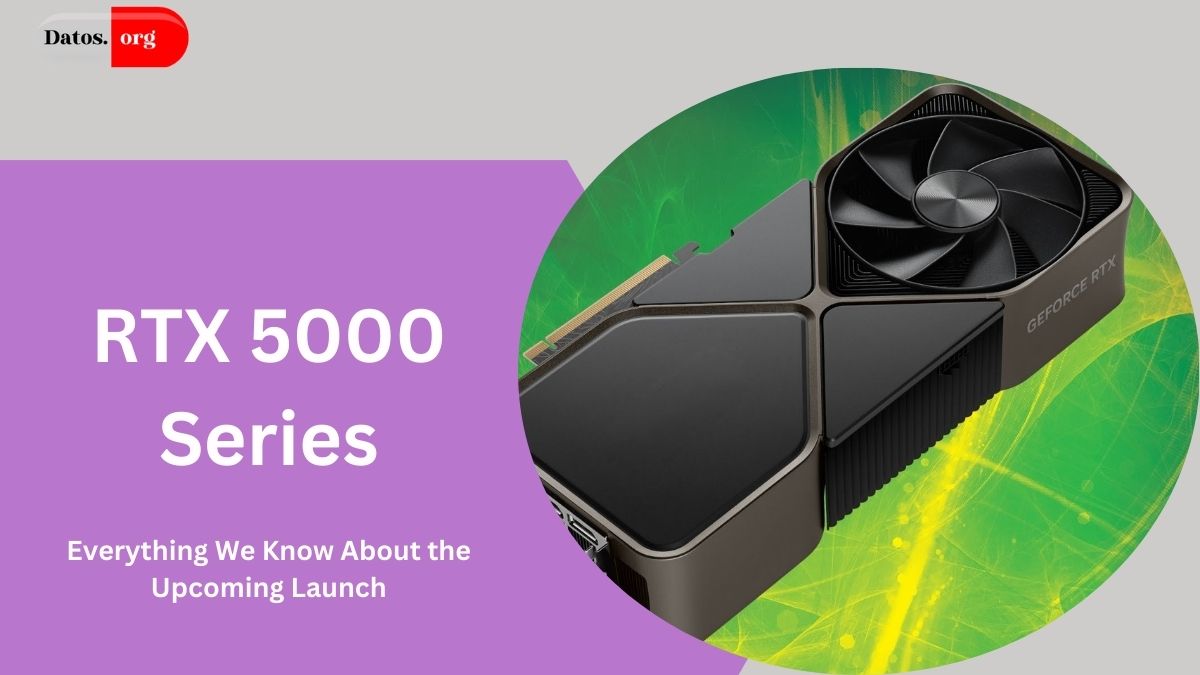The precise debut date for NVIDIA’s RTX 5000 series is still unclear. Initially, many fans expected these new graphics cards, known as “Blackwell,” to release this year.
However, reliable sources indicate that NVIDIA intends to present the series at CES 2025, set to take place in Las Vegas from January 7 to January 10, 2025.
With credible leakers like Team Green and kopite7kimi supporting this timeline, excitement is mounting for the announcements.

- Overview of Upcoming Models
- Memory Innovations
- Enhanced Features
- Increased Energy Demands
- Estimated Cost: Starting at $1,599
- Conclusion
- People May Ask
- What is the expected launch date for the RTX 5000 series?
- What features will the RTX 5090 have?
- How much power will the new graphics cards require?
- What will be the starting price for the RTX 5090?
- Why are GPU prices increasing?
Overview of Upcoming Models
Here’s a glimpse of the anticipated models in the RTX 5000 lineup, based on insights from trustworthy sources:
| GPU Code | Model Variant | Additional Options |
| GB202 | Nvidia RTX 5090 | Nvidia RTX 5090 Ti |
| GB203 | Nvidia RTX 5080 | Nvidia RTX 5080 Ti, Nvidia RTX 5070 Ti |
| GB205 | Nvidia RTX 5070 | Nvidia RTX 5060 Ti, Nvidia RTX 5070 Ti |
| GB206 | Nvidia RTX 5060 | Nvidia RTX 5060 Ti |
| GB207 | Nvidia RTX 5050 | Nvidia RTX 5050 Ti |
Focusing on the RTX 5090, rumors suggest it could feature 192 Streaming Multiprocessors and around 25,000 CUDA cores, marking a significant leap from its predecessor.
MUST READ : Minecraft and Roblox: Which Block-Based Game Comes Out on Top
This increase may lead to a performance boost of up to 33% compared to the flagship RTX 4000 series.
Memory Innovations
The RTX 5090 and its higher-end models are expected to utilize the latest GDDR7 memory technology, which could significantly enhance data transfer speeds.
Meanwhile, more affordable models like the RTX 5060 may stick with GDDR6, showcasing a variety of memory options across the series.
Exciting rumors also hint that the TITAN AI GB202-based and RTX 5090 models could outperform the RTX 4090 by 63% and 48%, respectively.
Enhanced Features
Moreover, the RTX 5090 is likely to adopt the new DisplayPort 2.1a standard, moving away from the outdated DisplayPort 1.4a that NVIDIA has used since 2016.
The new series is also rumored to come with improved ray tracing capabilities and better pricing compared to previous generations.
Increased Energy Demands
Recent leaks from power supply manufacturer Seasonic have revealed that the upcoming RTX 5000 series might require more power than earlier models. Here’s a breakdown of the expected power needs for each variant:
- RTX 5050: 100W (30W lower than the RTX 3050)
- RTX 5060: 170W (up from 115W)
- RTX 5070: 220W (up from 200W)
- RTX 5080: 350W (up from 320W)
- RTX 5090: 500W (up from 450W)
Estimated Cost: Starting at $1,599
The RTX 5000 series is anticipated to maintain the premium pricing trend of previous models.
Although no official pricing has been announced yet, it’s expected that the RTX 5090 will start above $1,599, the price point of the RTX 4090.
As GPU prices continue to rise, many in the tech community are urging consumers to be mindful of their spending to combat the increasing costs.
Conclusion
The excitement surrounding the RTX 5000 series is palpable as we approach its anticipated January 2025 reveal at CES.
With upgraded specifications, heightened power requirements, and premium pricing, NVIDIA’s new graphics cards promise to deliver exceptional performance for gamers and tech enthusiasts alike.
As we await further details, it’s clear that this series has the potential to make a significant mark in the gaming landscape.
People May Ask
What is the expected launch date for the RTX 5000 series?
The RTX 5000 series is expected to launch between January 7-10, 2025, at CES.
What features will the RTX 5090 have?
The RTX 5090 is anticipated to include 192 Streaming Multiprocessors, around 25,000 CUDA cores, and support for DisplayPort 2.1a, along with enhanced ray tracing capabilities.
How much power will the new graphics cards require?
The RTX 5050 will need about 100W, while the RTX 5060 is projected to require around 170W, indicating increased power demands across the series.
What will be the starting price for the RTX 5090?
The starting price for the RTX 5090 is likely to be around $1,599, which is higher than previous models.
Why are GPU prices increasing?
Rising production costs and improved performance features are contributing to the increasing prices in the GPU market, leading to discussions on consumer purchasing behavior.
Click here to know more.